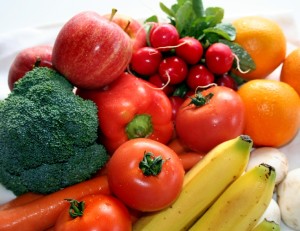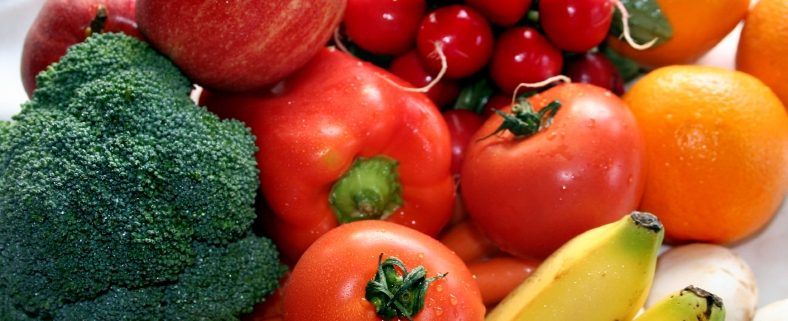June is National Fresh Fruits and Vegetables Month
 Did you know that June is Fresh Fruits and Vegetables Months? The entire month is dedicated to the promotion of incorporating more fruits and veggies into your meals, the importance of doing so with regard to health benefits, and the recommended serving sizes. The promotion of fresh fruits and vegetables will also include safe selection and storage methods as well as recipe ideas.
Did you know that June is Fresh Fruits and Vegetables Months? The entire month is dedicated to the promotion of incorporating more fruits and veggies into your meals, the importance of doing so with regard to health benefits, and the recommended serving sizes. The promotion of fresh fruits and vegetables will also include safe selection and storage methods as well as recipe ideas.
Fruits and vegetables are nutrient-rich making them a great way to get the most nutrients for your calories. This is because they are loaded with fiber, vitamins, minerals, antioxidants and phytochemicals. Additionally, fruits and vegetables are low in fat and calories, but keep you feeling full.
Being nutrient-rich, fruits and vegetables have immense health benefits as well as weight loss benefits. Consuming fruits and vegetables can aid in the prevention or management of several chronic diseases, such as cardiovascular disease, and even cancer.
With regard to weight management, fruits and vegetables added to meals can take up the bulk of your plate adding in lots of fiber and nutrients. Fruits and vegetables are low in fat and calories, but the fiber content keeps you feeling fuller longer. Essentially the end result is you are eating foods with low caloric density yet they provide more volume. This concept is otherwise known as volumetrics.
Extensive research has been done on the benefits of fruits and vegetables, specifically in the prevention, but also in management of cancer. This is because many of the vitamins and minerals included in fruits and vegetables do double duty as antioxidants and phytochemicals. Antioxidants and phytochemicals are beneficial because they prevent the oxidation of free radicals in the body that could potentially turn into cancerous cells.
So how much should you consume? The general daily serving recommendations according to USDA’s MyPlate are 2 cups of fruits and 2 ½ cups of vegetables per day. This recommendation is based on a 2000 calorie intake; however more accurate serving determinations depend on your age, weight, activity level and gender. These recommendations not only refer to fresh, but also raw, cooked, canned or frozen varieties. Fruit juice is also included in the recommendation, though you should make sure it is 100% fruit juice.
Now it’s your turn to take action: What new fruits and veggies will you start to incorporate into you meals?


Leave a Reply
Want to join the discussion?Feel free to contribute!